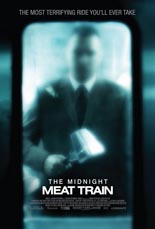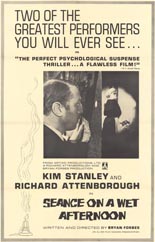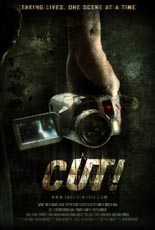
 Man, oh, man — the balls of Mark Polonia to place a copyright notice right on the title screen of Empire of the Apes. This is the $1.98 version of 20th Century Fox’s venerated Planet of the Apes franchise, still going strong after nearly five decades in existence. How a rip-off this brazen, this transparent could exist in an industry environment so litigious that the word “butler” ignites a legal firestorm, I’ll never know. Perhaps it’s flown so far under the Hollywood radar as to render itself stealth. It sure doesn’t fall under the First Amendment protection of parody, because Empire is too fan-fictiony to resemble a spoof, even by honest error.
Man, oh, man — the balls of Mark Polonia to place a copyright notice right on the title screen of Empire of the Apes. This is the $1.98 version of 20th Century Fox’s venerated Planet of the Apes franchise, still going strong after nearly five decades in existence. How a rip-off this brazen, this transparent could exist in an industry environment so litigious that the word “butler” ignites a legal firestorm, I’ll never know. Perhaps it’s flown so far under the Hollywood radar as to render itself stealth. It sure doesn’t fall under the First Amendment protection of parody, because Empire is too fan-fictiony to resemble a spoof, even by honest error.
Three barely dressed women (the credits don’t bother to give them names, so I won’t, either) imprisoned on a spaceship make their way to an escape pod, which promptly crash-lands on a (but not the) planet of apes. Clearly just men behind masks, these primates wear denim jeans and trench coats and footwear from Cabela’s. They also talk! Despite being so advanced on the evolutionary scale, they are confused by the women and their weapons; one ape accidentally shoots his own head off, to the delight of his poo-flinging brethren. At least I think they’re laughing; it’s tough to tell since their mandibles move to approximate speech patterns, yet their voices echo inside the masks rather than emanate from within.
 When it comes to dialogue, the ladies — or “the primitives,” as the script by director Polonia (Amityville Death House) calls them — get all the USDA-choice lines, from “‘Behave’ rhymes with ‘slave’” to “What are you gonna do, put us in a cage and feed us bananas?” (Ba-dum-bum.) As if commenting on the females’ collective performance, one ape warns, “It is best if you do not speak.” I agree.
When it comes to dialogue, the ladies — or “the primitives,” as the script by director Polonia (Amityville Death House) calls them — get all the USDA-choice lines, from “‘Behave’ rhymes with ‘slave’” to “What are you gonna do, put us in a cage and feed us bananas?” (Ba-dum-bum.) As if commenting on the females’ collective performance, one ape warns, “It is best if you do not speak.” I agree.
Empire is not a better movie than the most recent “real” Planet of the Apes chapter, 2014’s Dawn of the, but if — and only if — you have just 60.77 percent of the time to watch … —Rod Lott


 In the annals of Clive Barker cinematic adaptations,
In the annals of Clive Barker cinematic adaptations, 

 Across three adventures in the early ’70s, twentysomething tramp Ginger McAllister was the 007 of 42nd Street. Written and directed by Don Schain, the titillating trilogy starred his then-wife, Cheri Caffaro (
Across three adventures in the early ’70s, twentysomething tramp Ginger McAllister was the 007 of 42nd Street. Written and directed by Don Schain, the titillating trilogy starred his then-wife, Cheri Caffaro (

 Myra Savage isn’t just your run-of-the-mill psychic. She’s got ambition; the woman just needs a little free media. So it is in
Myra Savage isn’t just your run-of-the-mill psychic. She’s got ambition; the woman just needs a little free media. So it is in 

